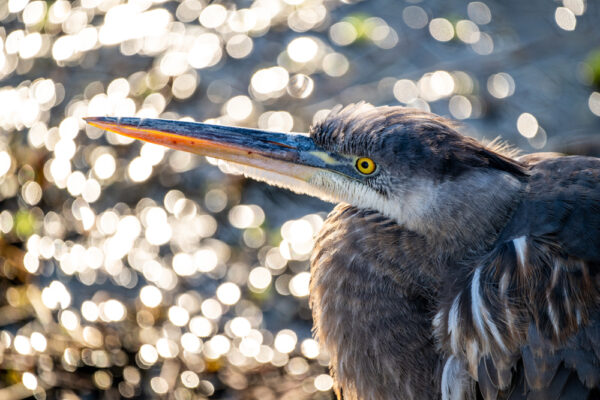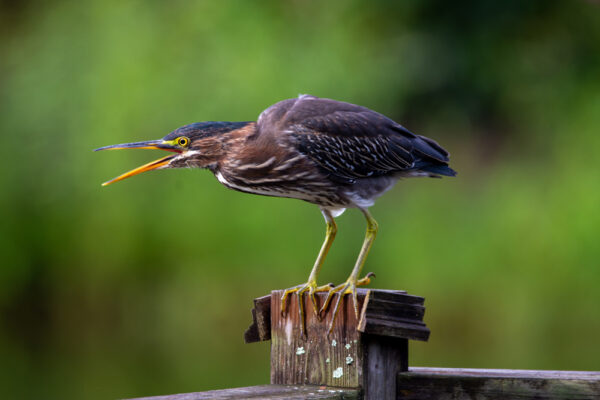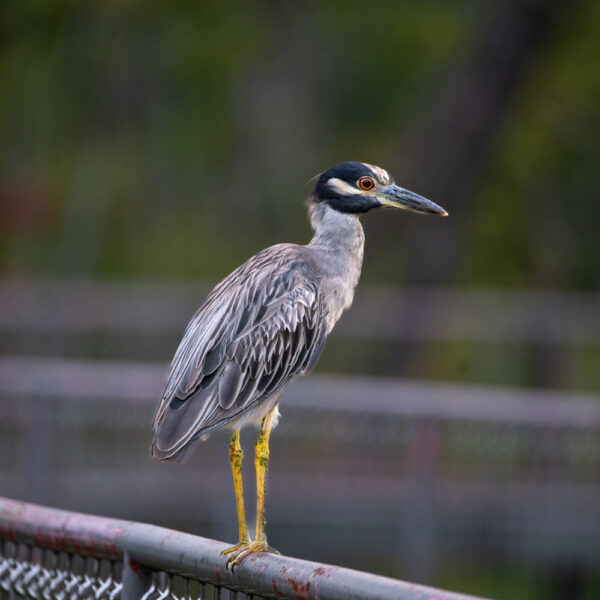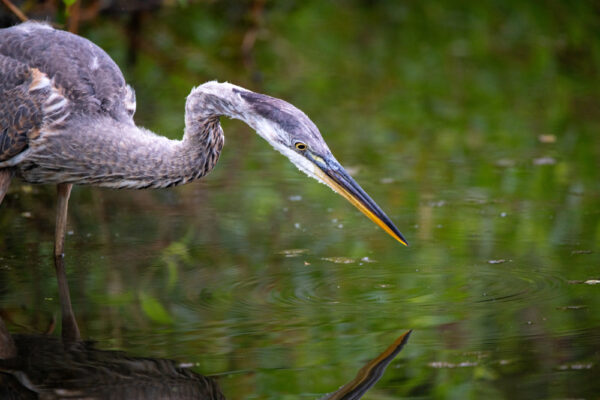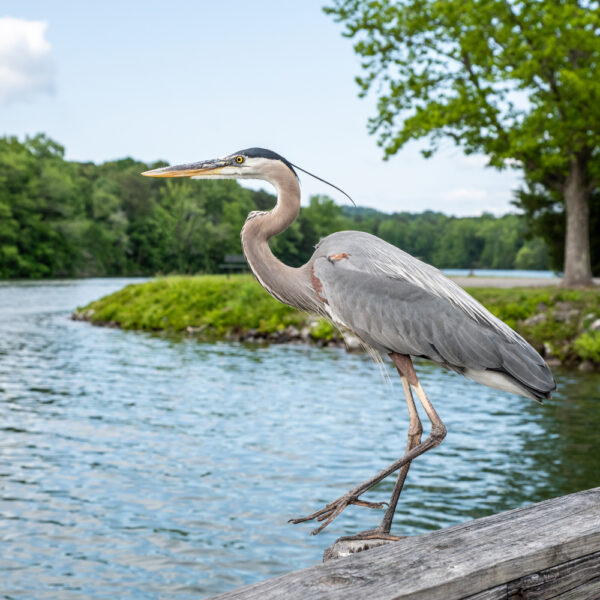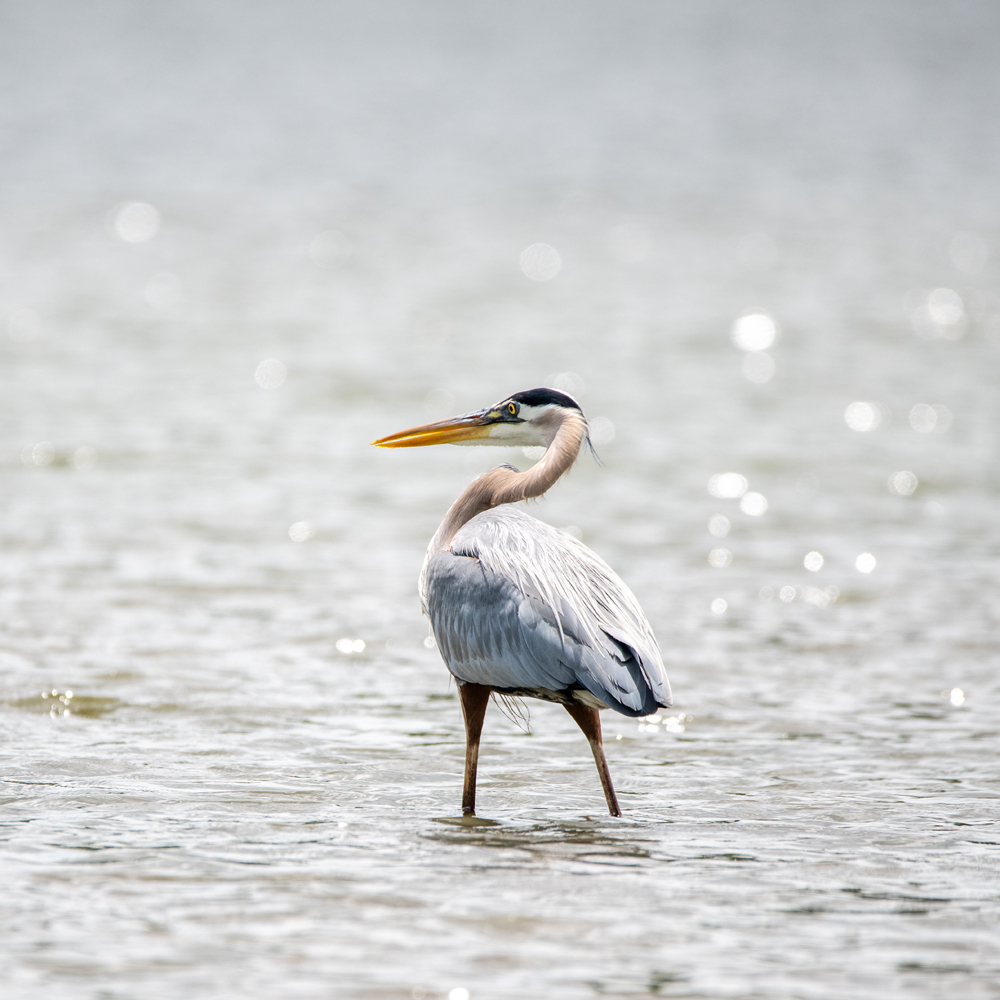
If you’ve ever strolled along the Stones River Greenway or wandered the boardwalk at Murfree Springs, you’ve probably caught a glimpse of one of the water’s most fascinating residents—the heron. These birds can be found standing motionless in the shallows or soaring overhead with slow, steady wingbeats. From the towering great blue heron to the petite green heron, these birds add a special charm to our local waterways.
Photos by Ashleigh Newnes
Let’s start with the giant of the group, the great blue heron. These are the ones you’ll see most often, towering over the water with their long legs and lengthy beaks. With their blue-gray feathers and impressive six-foot wingspan, they’re easy to spot. Despite their impressive size, they only weigh from 5 to 6 pounds, thanks to their hollow bones. They’re expert fishers, standing still for what seems like forever before striking lightning-fast at their prey. But fish aren’t their only meal—they’ll also go after crustaceans, amphibians, reptiles and even smaller birds.
If the great blue heron is the patient fisherman, the green heron is the crafty one. These smaller, stockier birds tend to hide out in thicker vegetation, so you’ll have to look a little harder to spot them. Their dark greenish backs and chestnut-colored necks help them blend in. One of the coolest things about them: they actually use tools! They’ve been known to drop insects or small objects onto the water’s surface to lure fish in.
The next one’s a bit of a night owl, well, night heron. Stocky and short-necked with striking red eyes, the black-crowned night heron is more active after dark, hunting for fish, frogs and crustaceans. If you’re near a river or pond in the evening, you might hear their distinctive calls before you actually see them.
A close relative of the black-crowned night heron, the yellow-crowned night heron stands out with its bold yellow crown and long legs. These birds are expert crustacean hunters, often seen stalking prey in shallow wetlands and wet fields. Their diet leans heavily on crabs and crayfish, which they catch with a quick lunge before shaking them apart or swallowing them whole. While they are most commonly found in coastal marshes and barrier islands, they thrive in Tennessee’s waterways, where crayfish are abundant.
If you want a guaranteed chance to see herons up close, Murfree Spring Wetlands is the place to go. This hidden gem in downtown Murfreesboro is a prime habitat for wading birds, offering shallow waters, vegetation and plenty of food. Great blue herons are a common sight here, gracefully wading through the water, while green herons and night herons lurk in the shadows or thick vegetation. Bring a pair of binoculars and slowly walk along the boardwalk—you never know what you’ll spot! Often, all three can be spotted on the same trip. (And maybe an otter or a beaver, too.)
Herons are currently ranked as a low concern for conservation. They are pretty resilient and widespread, but that doesn’t mean they don’t face challenges. As Murfreesboro grows, wetland habitats shrink, pollution increases and human disturbances become more frequent. Clean waterways are essential, not just for herons but for countless other wildlife species, too.
Local conservation efforts like river cleanups and habitat protection projects help keep their homes safe. You can pitch in, too—keeping trash out of waterways, taking care not to disturb nesting sites, and supporting wetland conservation all make a difference.
Not sure how to help? Visit Outdoor Murfreesboro’s volunteer page (murfreesborotn.gov/1937/Volunteer-with-Us) for opportunities and tips on how to make a difference right here in our town.



